Alabama
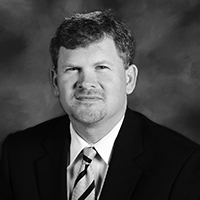
Daniel Steele
Thompson Sixth Grade Center
Alabaster, AL
Grades: Grade 6
Students: 491
Region: Suburban
• Connecting with students and building a positive school culture
• Fostering collaboration among teachers
In the last year we launched an exciting and unique initiative that has increased collaboration among the staff, fostered peer observations, and provided meaningful professional growth opportunities for our teachers. We trained all of our classroom teachers on AdvancED’s classroom observation instrument known as “eleot.” Not only were our teachers trained on this instrument, but the academic departments had the opportunity to practice these observations in the classrooms of their peers. With each of these observations, the teachers took time to debrief as a department and to reflect on the lesson and dialogue about the eleot scores. The completed form was then returned to the observed teacher. Over the course of the year, teachers continued to use the eleot process to observe their colleagues. Peer observations are inherently valuable for the observing teacher, and when the hosting teacher received the comprehensive eleot feedback, the observation became valuable for them as well.
Alaska
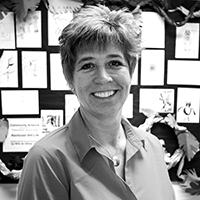
Shaun Kraska
West Valley High School
Fairbanks, AK
Grades: 9–12
Students: 1,050
Region: Suburban
• Collaboration
• Building a sense of team in school and the district
Implementing professional learning communities at West Valley was part of an entire district initiative approximately eight years ago. However, with a large staff and a resistance to change, this was more than simply asking teachers to work together. Under the guidance of our administrative team, we gently guided our staff in a positive direction, celebrating risks and small successes along the way. In everything we did, we focused on working collaboratively and making programmatic decisions that were grounded in student learning. I would select topics for discussion, gather data for review, and then provide the forum for teachers to do their work as professionals. I didn’t micromanage the discussion, but I built in structures for accountability so that everyone responded and everyone had a voice. Now Professional Learning Communities (PLCs) are the culture in the school and we have shared leadership in the PLC topics each quarter of the school year. It works.
Arizona

Dennis J. Barger
Vail Academy and High School
Tucson, AZ
Grades: K–12
Students: 500
Region: Suburban
• Team building
• Culture
The culture of Vail Academy and High School is the greatest accomplishment of my career. We are a school where all are welcome and encouraged to be successful. My belief that “culture trumps everything” has created a school environment that has led to much of our success as measured in student, parent, and staff surveys. When a guest walks onto our campus they often describe our school as having a great feel. That is not an accident—we work very hard to make that a priority. The atmosphere of respect for all and expectations of high standards for both academic and social achievement has allowed us to be successful. This culture has created trust among students, parents, and staff—resulting in a very personalized environment. The size of our K–12 school of 500 has also contributed to our getting to know families and working with them for student success.
Arkansas
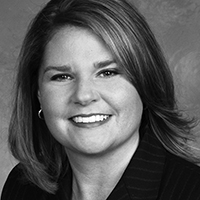
Ginni McDonald
Northside High School
Fort Smith, AR
Grades: 10–12
Students: 1,699
Region: Urban
• Organization
• High expectations
Increasing Northside High School graduates is one of our school goals. The culture of Northside has changed through high expectations. This process started with analyzing data to meet individual student needs. Communication begins with a certified letter to parents of students at risk of not graduating. Regular, individual progress meetings are held with counselors, students, parents, and the principal. In the fall, 3G—a student created conference—was held on campus. This gave students an opportunity to choose sessions to meet their needs and access a general session with a keynote speaker to address goals and perseverance. Students are expected to apply to college or another postsecondary opportunity. Posters of the student with their chosen college or postsecondary decision are hung in the hallways throughout the school. Graduation cap toppers are made for each graduate to represent their plan. These actions have collectively resulted in positive performance and cultural change.
California
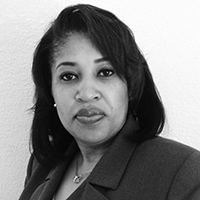
Crechena Wise
Tetzlaff Middle School – Accelerated Learning Academy
Cerritos, CA
Grades: 7–8
Students: 647
Region: Urban
• Empathy for diverse learners
• Working to build collaborative teams
Tetzlaff was granted $1.8 million from the Magnet School of America in 2008 and we were faced with the decision to create a magnet school that was inclusive of all learners. We chose to create a school with the primary mission to prepare all students for high school. We visited our feeder high schools and discovered an absence of minority, low-income, and male students in Advanced Placement (AP) classes. We decided to make an effort to close this achievement gap. By choosing curriculum that focused on the academic rigor of AP classes and teachers’ participation in professional development to include AP instructional strategies for all students, we believe that we made significant strides in the area of academic achievement for all students. As of 2013, all subgroups met or exceeded the state standard of proficiency. We attribute this academic success to collaborative leadership and an incredible team to ensure success.
Colorado
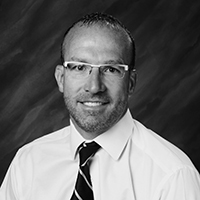
Thomas J. Dodd
Lesher Middle School
Fort Collins, CO
Grades: 6–8
Students: 768
Region: Suburban
• Innovative leadership
• Influencing principal evaluations of teacher performance
Innovative leadership involves breaking apart old ideas so new ones can emerge, using research to knock the system out of equilibrium, and seeking resourceful solutions. To align the Breaking Ranks core area components of curriculum, instruction, and assessment, Lesher moved away from the historical practice of averaging a collection of points on a traditional 100-point scale to arrive at an A–F grade (predicated on the bell curve) to authentically assessing student learning progress on the Common Core State Standards/Colorado Academic Standards. This was done using the four International Baccalaureate Middle Years Program’s Criteria across eight subject areas. Lesher communicates levels of academic performance (0–8 rubrics) separate from work habit behaviors (novice, learner, practitioner, expert). Giving students continual feedback with multiple opportunities to improve their current performance level toward set criteria (concepts, content, skills) as well as emphasizing the most recent and frequent evidence encourages students to advance their performance over time.
Connecticut

Alan J. Strauss
The Gilbert School
Winsted, CT
Grades: 7–12
Students: 547
Region: Rural
• Increasing rigor
• Improving climate
In just four years, the Gilbert School has gone from last in its District Reference Groups (DRGs) in graduation rates, AP scores, and SAT scores, to first and being named a U.S. News & World Report silver medal school by increasing rigor, developing a culture of The Gilbert Way, and ensuring equity and access for all students. We have drastically changed a course selection list from a stale non-descript one to a relevant, 21st-century project based on rigorous and fundamentally strong Common Core-based curriculum. With an incredibly strong and student-centered faculty, Gilbert has increased its AP courses from four to 14, its college and career readiness focus to support students at all levels, and graduation rates from 73 percent to 94 percent while raising academic and graduation standards and expectations. With our collaborative practices, our teachers drive professional development, our parent groups support our activities in non-financial ways, and our students thrive incessantly from this work.
District of Columbia
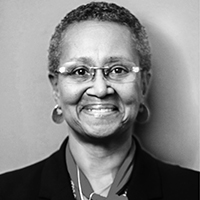
Kathryn Procope
Howard University Middle School of Mathematics and Science
Washington, D.C.
Grades: 6–8
Students: 253
Region: Urban
• Positively affecting school culture
• Understanding how to effectively implement educational technology
Our students have taken ownership of our school culture. They realize that by exemplifying our core values of excellence, leadership, service, and truth, they are having a positive impact on the community. Weekly student-led, grade-level town hall meetings are where our students review announcements, plan community service activities, celebrate successes, and acknowledge their teachers and peers. During advisory period, teachers implement a culture curriculum designed to teach our students about our school cultural expectations. Through our PBIS system, students earn school “bucks” for demonstrating our core values. School bucks can be redeemed for items in the school store, dress-down passes, and fun field trips. We also implemented a Parent University where our parents are an integral part of our school program. Parents participate in workshops where they receive parenting tips and career assistance. We are the Junior Bison and we are leaders in service in our school and our community.
Georgia
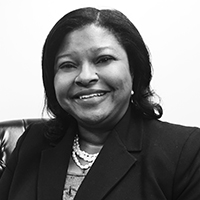
Stephanie S. Johnson
Maynard H. Jackson High School
Atlanta, GA
Grades: 9–12
Students: 1,143
Region: Urban
• Achievement
• Instructional leadership
In my first year as principal, I learned that if the instructional leader does not lead her time, operational issues irrelevant to achievement will manage the entire day. Therefore, I developed “Pedagogy and Practice,” a program of best practices that includes instructional coaching, tiered professional development, and ongoing monitoring with feedback to increase teacher effectiveness and student achievement. On Mondays, teachers receive compliance observations to ensure the learning environment has a standards-aligned instructional framework, updated word wall, posted data, and rigor meter (Bloom’s and Depth of Knowledge). Tuesdays and Wednesdays are instructional observation days focusing on practices I address in the weekly communication. Thursdays are for feedback and reflection when each teacher debriefs with the leader that observed his or her instruction that week and submits lesson plans and assessments to review for the upcoming week. Teachers also review lesson videos or feedback narratives to discuss “glows” and “grows” from observations. Fridays function as schoolwide professional development day.
Hawaii
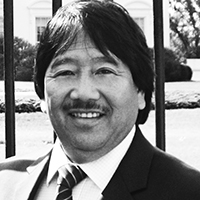
Michael K. Harano
President George Washington Middle School
Honolulu, HI
Grades: 6–8
Students: 841
Region: Urban
• Middle school philosophy
• Developing a continuous improvement planning process
When I first got back to Washington Middle School as principal, I attended my first math competition and was dismayed to find my students looking at the trophies—giving first place to a private school and second place to another private school. When I asked them why, their answer was, “because they’re smarter then us, they go to private school.” I told them that I thought the eventual winner of the competition would be the students who worked the hardest and practiced the most, regardless of what school they attended. My only question to them was, “did you work hard enough to win?” I am happy to say that my students no longer concede first place to anyone and we have won the state math competition six years in a row and our students rank in the top .1 percent of students across the nation. Our school culture has certainly changed for the better.
Idaho
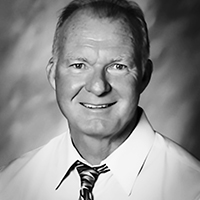
Michael R. Williams
Middleton High School
Middleton, ID
Grades: 9–12
Students: 1,156
Region: Rural
• Developing electronic teacher portfolios and electronic student portfolios for college admission
• Instructional leadership
As an instructional leader I find ways to balance the building management and day-to-day activities with instructional leadership. To increase my capacity as an instructional leader, I engage in developing tiered professional learning communities among our staff. This includes the building administrative team, building leadership team, department chairs, MCAPS curriculum team, and departments. These tiers assist in sharing the instructional leadership and responsibilities. The tiered system at Middleton High School has increased its leadership capacity to build a foundation of teacher leaders who share the overall vision of the instructional goals. I have supported the creation of personalized professional development (PD). The outcomes of this PD are individualized teacher learning plans aligned to professional goals that support teacher instructional practice and web-based professional portfolios.
Illinois

Robert Nolting
Victor J. Andrew High School
Orland Hills, IL
Grades: 9–12
Students: 2,041
Region: Suburban
• Collaborative processes
• Data-driven decision making
It takes the collective efforts of a large number of people to make substantial impact. In a school setting, this includes administration, staff, students, parents, and the community. At Victor J. Andrew, I am most proud of the impact we’ve had raising standards through a relationship-based, collaborative approach. By including all stakeholders, building trust, and engaging our community, we have made a significant shift in expectations. As a result, we’ve seen an increase in our AP/honors enrollment and a decline in basic/low-track programming. At the same time, we’ve decreased failures, increased graduation rates, and received national attention from the Washington Post and Newsweek. We bring this culture of expectations to the classroom through the establishment of Professional Learning Communities, which target specific student outcomes and our system of interventions. This includes a peer tutor center and revised schedule, which allows for enrichment and interventions for all students.
Indiana
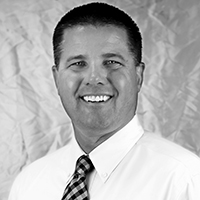
James R. Voelz
Doe Creek Middle School
New Palestine, IN
Grades: 7–8
Students: 587
Region: Suburban
• Creating a positive school culture
• Creating cutting-edge learning experiences
Five years ago, a collaborative team consisting of teachers, students, parents, community members, district staff, and I successfully implemented one-to-one computing at Doe Creek. We have not looked back and continue to be on the cutting edge of the education technology world. I worked to create an atmosphere where teachers and students can grow, and technology is a big part of that educational growth. The staff attends weekly meetings on how to best use a blended curriculum in the classroom. These meetings are called Mac Mondays. Sometimes these professional development opportunities are the whole group and other times they are broken up into curriculum teams. The key to Doe Creek Middle School’s success is that the computer is not the focus; the focus is on instruction.
Iowa
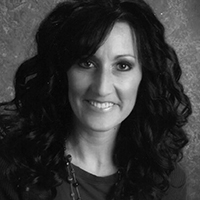
Autumn Pino
Roosevelt Middle School
Cedar Rapids, IA
Grades: 6–8
Students: 547
Region: Suburban
• Implementing a shared leadership model to drive school improvement
• Creating personalized learning opportunities for students
Roosevelt is committed to creating personalized experiences for our students, linking passion to the learning process. At Roosevelt, we have shifted to a culture where we foster innovation and embrace a growth mindset. Striving to fulfill our mission, we have engaged in several innovative projects that provide high-quality, student-centered opportunities for all students. The implementation of learner-centered assessment, choice-based art, project-based learning, and a comprehensive assistive technology lab are powerful examples. Our most notable accomplishment is our option program, a program that provides individualized instruction through a project-based/flipped classroom model in a flexible learning environment where bells don’t exist. Goals, in correlation with outcomes of the program, include higher student engagement, school connectedness, community connections, and the development of 21st-century skills. Roosevelt’s commitment to dynamic learning has earned us the honor of becoming one of the first middle school magnet schools in the state of Iowa.
Kansas
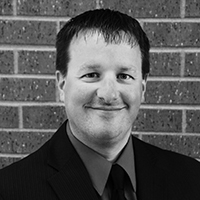
Britton Hart
Emporia High School
Emporia, KS
Grades: 9–12
Students: 1,150
Region: Rural
• Collaborative leadership
• Social media and communication
At Emporia High School I had the privilege to collaborate with our geometry and construction teacher to create an application-based geometry class taught through hands-on learning of construction. The Common Core geometry content learned in a theoretical classroom is also taught in the geometry and construction class. In just the second year, our students are experiencing huge benefits. Students enrolled in geometry/construction score higher on their annual MAP score than students in the traditional geometry class. Students are also experiencing a 6.27 percentile increase from fall to spring versus the .36 percentile increase in regular geometry. The two-class sections are currently accepting 80 students each year and additional students are placed on a waiting list. Our future goal is to increase enrollment and to construct a single-family home each school year for our local Habitat for Humanity organization.
Kentucky

Duane A. Kline
Owen County High School
Owentown, KY
Grades: 9–12
Students: 586
Region: Rural
• Developing teacher leaders and mentoring teachers
• Engaging students in leadership
Focusing on student leadership has been a hallmark of my work in schools. The principalship of Owen County High School has afforded us the opportunity to develop and expand student leadership opportunities, collaborating with faculty and our community to create a positive learning environment. We have worked to expand opportunities for students in collaborative leadership, including our student council, our GRIT (Goal-driven, Resilient, Influential Teens) team, our principal’s advisory council, and a wide variety of school clubs. These groups manage a wide variety of resources and activities in our building, ranging from designing a small student group study area, to managing blood drives, to taking part in our rebels outreach Saturdays, where student athletes gather to serve families and organizations throughout our community. I regularly have students approach me with suggestions to make our school a better one, and I try to say yes as often as possible.
Maine

Derek Pierce
Casco Bay High School
Portland, ME
Grades: 9–12
Students: 387
Region: Urban
• Student voice and leadership
• Long-term interdisciplinary projects
In December 2014, four Casco Bay High School students were chosen to be the keynote speakers at the EL Education National Conference in Boston. They wowed a crowd of nearly one thousand educators with a polished 45-minute presentation about a year-long project that addressed both climate change and the power of a generation to make change. They shared how their entire class presented and defended their research at a climate change symposium; then they travelled to Sandy Hook, NY, to address climate change through both story and service. They helped to rebuild homes ravaged by Hurricane Sandy, and they created professional-quality documentaries about local heroes who persevered amidst the devastation created by the storm. The resulting documentaries premiered in both Portland and New York City. This year’s “Junior Journey” focused on income inequality and culminated in travel, service, and oral histories in Detroit.
Maryland
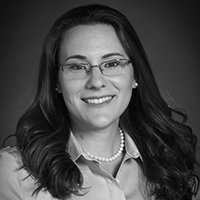
Annette E. Wallace
Pocomoke High School
Pocomoke City, MD
Grades: 9–12
Students: 334
Region: Rural
• College and career planning
• Personalization
As principal I had to ask, “what is worth fighting for at Pocomoke High School?” Serving a community where nearly 70 percent of students live in poverty, the answer wholeheartedly is the American dream. Every student deserves the opportunity to experience success and prosperity. The key to the dream continually evolves, eliciting hard work and dedication applied to a specific skill set or an advanced education. Every student in Pocomoke must commit his or her intent to specialized learning beyond high school diploma requirements. Project 100 sells hope, actualizing the American dream—every student at Pocomoke will obtain an education beyond high school either through college, workforce development, or the military. In order to achieve this goal, a high level of personalization takes place beginning with vertical articulation for individual college and career planning at our feeder school. One year after Project 100 began, 100 percent of the graduating class was accepted to a college or university.
Massachusetts
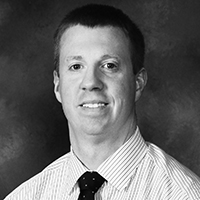
Justin Cameron
Frederick W. Hartnett Middle School
Blackstone, MA
Grades: 6–8
Students: 435
Region: Rural
• School culture
• Empowering student learners
In 2014, I created a “Fall Fantasy Reading League” modeled, somewhat, after fantasy football. Reading teams must chart the amount of time they read for pleasure outside of academic classes. All students are involved, with the entire faculty and staff serving as coaches. The competitive nature of middle level students simply takes over and students are reading as opposed to engaging in the more popular alternatives. This past fall, the Fantasy Reading League was chronicled by NPR, which allowed other schools—from Bellingham, MA, to Olympia, WA—to learn and put in place their own Fantasy Reading League taking from the model we set.
Michigan

Steve Carlson
Sandusky Junior/Senior High School
Sandusky, MI
Grades: 7–12
Students: 460
Region: Rural
• Teacher observation/evaluation best practices
• Effective communication with stakeholders
Michigan law requires the use of student growth data in teacher evaluations but does not provide templates for doing so. This can be a controversial subject for teachers and it is not always easy to implement a student growth model that is focused on the critical needs of students. Using collaborative leadership via the school improvement team, our school has recently adopted Student Learning Objectives to help measure student growth. This has been a teacher-led initiative that, in its early stages, is more focused on teachers reflecting on data as opposed to teachers earning or losing points in their evaluations. This collaborative approach has led to strong staff buy-in and, most importantly, a call for more collaboration to form better assessments and analyze data for purposes of improved instruction. Our students will be seeing more authentic and better-aligned assessments as a result of this process.
Minnesota
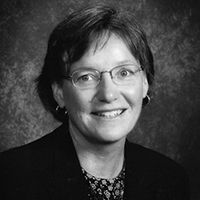
Jeanette Swanson
Waseca Junior & Senior High School
Waseca, MN
Grades: 7–12
Students: 983
Region: Rural
• Character education
• Professional learning communities
As principal of Waseca Junior & Senior High, I consider our school’s designation as a 2015 National School of Character our success. The 11 Principles of Character Education set the stage for the three core areas of Breaking Ranks in our school. The 11 Principles have shaped our school culture. We have identified, communicated, and taught our school values in everything we do. It is reflected in student and staff relationships, service learning, and fostering intrinsic motivation. We provide meaningful academic curriculum that respects all learners; accommodates differences; provides challenging curriculum; and promotes team building, perseverance, hard work, and academic integrity. We partner with our families and our community. We embed these principles in both the classroom and in our homeroom curriculum as well as part of our staff development plan and assess their effectiveness. These are our expectations: respect yourself, others, property, and learning. That is the Bluejay Way.
Mississippi
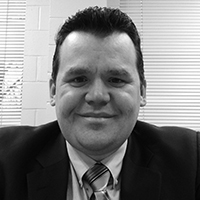
Austin Brown
Madison Central High School
Madison, MS
Grades: 10–12
Students: 1,350
Region: Suburban
• ACT/PSAT preparation
• Positive behavior rewards
When I arrived at Madison Central four years ago, the ACT composite score for the school was a 20.4. Four years later, that has risen each year to a high of 23.2 this past school year. We feel like this is in part a result of the opportunities that we have given our students to personally connect with the school by joining several new clubs that we have started in the past few years. We have a 30+ club and a Silver Club that recognizes students who score well on the ACT. We also started a recognition program that rewards students for growth on the ACT from one year to the next, regardless of overall composite. These, along with about 15 other clubs that we have started recently, help us to build school unity by giving students the chance to connect with their school and community.
Missouri
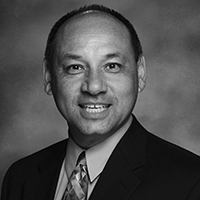
Theodore J. Huff
Francis Howell Middle School
St. Charles, MO
Grades: 6–8
Students: 841
Region: Suburban
• Integrating social media in school and with parents
• Improving school climate
In our end-of-the-year building climate survey, 96.15 percent of the teachers noted that “there are opportunities for shared decision making” and 96.23 percent noted that “we have open channels of communication.” Our school community celebrated these results in improved shared leadership. Why? This is up from 80.4 percent and 76.1 percent, respectively, from last year’s final climate survey. In planning for this school year, we worked collectively to identify four key focus areas to improve teacher voice and communication. We developed a systems approach with communication methods and practices among staff, students, and parents. For the staff, we established four key areas that would drive this focus—we developed the CUES: communicates information; has open channels for communication; has a united administrative team; and has evidence of academic focus and supervision/visibility. We focused on the CUES within our daily work and evaluated them weekly. Quarterly progress monitoring (surveys) noted improvement, paving the way to positive growth and change.
Montana
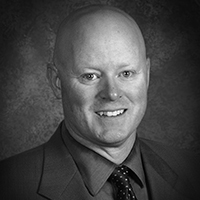
Dan Kimzey
Hamilton High School
Hamilton, MT
Grades: 9–12
Students: 528
Region: Rural
• Culture of excellence
• Dual-credit (Running Start) programs
The Education Leadership program at the University of North Dakota focused heavily on Breaking Ranks and prepared me exceptionally well for the administrative positions I’ve held. Collaborative leadership has been a hallmark of my principalship and it begins with a schoolwide commitment to developing and maintaining a culture of excellence for all members of our school community. Students, faculty, parents, and the community have embraced the culture of excellence at Hamilton High School and it is relentlessly pursued and publicly reinforced at every opportunity through press releases, the website, and Facebook. Specific to this culture is a focus on high-quality instruction in a high-quality environment. By focusing all professional development efforts on those two broad categories, establishing professional learning teams and using “homegrown PD” with fidelity, teacher-leaders have the opportunity to impart their skills on the faculty as a whole, and the level of collaboration has increased dramatically.
Nebraska

Jay R. Dostal
Kearney High School
Kearney, NE
Grades: 9–12
Students: 1,450
Region: Rural
• Focusing on achievement
• Small Learning Communities
I am extremely proud of the work I have done on the design and implementation of Small Learning Communities (SLCs) at Kearney High School. I have worked tremendously hard to lead my school through the Nebraska Career Education reVISION process and feel that we have developed an educational model that will be duplicated in the state of Nebraska as well as our region. This thought was validated recently when we reached the round of 200 schools nationwide for the Super School Project, which has a goal of helping redefine and reimagine the high school experience. The idea behind SLCs is based on the NASSP Breaking Ranks: The Comprehensive Framework for School Improvement, which calls for changes in curriculum, instruction, assessment, school organization, professional development, community partnerships, and leadership in American high schools. The development of SLCs has been very meticulous and Kearney High has set itself up for great things in the future.
Nevada
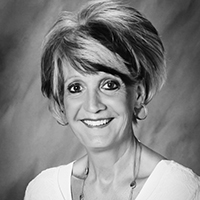
Susan Harrison
Sig Rogich Middle School
Las Vegas, NV
Grades: 6–8
Students: 1,773
Region: Suburban
• Closing achievement gaps through targeted instruction strategies
• Curriculum and instruction—project-based learning
At Sig Rogich Middle School (SRMS), I have facilitated change that aligns with the Nevada Academic Content Standards to meet a diverse group of students’ needs. A significant focus is the altered academic schedule with an extended day schedule, permitting students to take classes before and after school, resulting in a seven-period day rather than the traditional six-class day. SRMS provides numerous fine arts classes servicing over 75 percent of the school—giving students the opportunity to enroll in advanced classes that receive high school credit such as Spanish, French, geometry, and high school algebra. With the extended day, students no longer have to choose between advanced class electives and fine arts; they can take both electives, which research demonstrates contributes to the development of the whole brain in overall learning and critical thinking skills. Systemic and systematic changes have resulted in instrumental academic growth and achievement for all students.
New Hampshire

Brian Pickering
Contoocook Valley Regional High School
Peterborough, NH
Grades: 9–12
Students: 787
Region: Rural
• Building a positive culture to enhance student learning
• Creating flexible time during the school day
For the last five years, our school’s greatest success story has been connected to the personalization of student learning through Teachers in Academic Support Centers (TASC). The model was developed at Contoocook Valley Regional High School by an interdisciplinary group of teachers. TASC guarantees student access to mentors, teachers, and resources at a predictable time for a predictable duration (43 minutes) every day during the school day. During this flexible time block, students access interventions, enrichments, extensions, and/or social-emotional supports on demand. Choices for these opportunities vary weekly and are mostly student-driven because we encourage students to take responsibility for their own learning. However, TASC becomes teacher-directed whenever student performance declines below a C-level or a significant skill deficit is detected. Our quick wins were a 31 percent reduction in Ds and Fs after the first full year of implementation. Long-term successes were achieved through individualized expanded learning opportunities, and several of them have been award-winning.
New Jersey
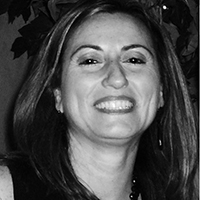
Lenore M. Kingsmore
Henry Hudson Regional School
Highlands, NJ
Grades: 7–12
Students: 298
Region: Suburban
• Effective communication skills
• Effective scheduling practices
Collaborative leadership has always been at the core of who I am as a leader and teacher. Working with teachers, parents, board of education members, community leaders, and students in a collaborative fashion has resulted in marked improvements in school culture, climate, and academic success in the classroom. Effective communication between home and school has enabled parents to be a part of the decision-making process at the school. This open communication is seen in active parent and faculty advisory committees, who meet monthly to address educational, social, and physical concerns and needs of the two communities. This cooperation between home and school has demystified the middle and high school years for the parents while having teachers recognize the importance of dialogue with parents both for guidance and praise. The same positive communication occurs monthly with student council students. This open forum has resulted in increased rigor and success in testing.
New Mexico

Vicky J. McCarty
Explore Academy Charter School
Albuquerque, NM
Grades: 9–12
Students: 170
Region: Urban
• Safety and security
• Collaboration
Explore Academy Charter School (EACS) operates under a different philosophy than most educational institutions. The school is founded and managed collectively by its teaching and administrative staff with one goal in mind—to produce an environment conducive to student success through exploration. The school’s general management, from administration to curriculum, operates under a democratic, bottom-up philosophy with all members of our school community, including students, playing a role in the school’s operation and evolution. Every Friday the staff of EACS collaborates about all facets of the school’s operations. In the school’s first year of existence, PARCC scores were above the New Mexico state average in three out of four categories. I believe this is, in large part, due to the collective input from the entire EACS staff. In addition, the positive culture and high staff morale are a result of everyone feeling like a valued member of the school community.
New York
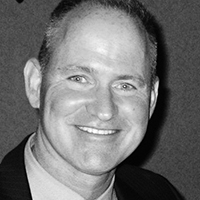
Donald F. Gately
Jericho Middle School
Jericho, NY
Grades: 6–8
Students: 662
Region: Suburban
• Innovative professional development models
• Leadership tools for the 21st century
I led the implementation of an innovative standards-based grading system, where departmental rubrics were developed by teachers in each subject area. Scoring descriptors from Robert Marzano’s Generic Scoring Scale from his book, Classroom Assessment and Grading That Work, are used as the basis for the student grading scale used on the report card. This approach rejects the use of averaging to calculate grades. Homework is optional and non-academic factors do not count in students’ grades. Students are given opportunities to revise their work and re-take exams until they meet or exceed the performance standards. Comprehensive information about the report card and grading is available on our website, including departmental rubrics for every subject area. Teachers use an online gradebook so feedback to students and families is dynamic and comprehensive. Data-based instructional decision making is guided by regular benchmark exams that are aligned with the state’s learning standards and modeled after the New York State Assessments.
North Carolina

Billie W. Berry
Camden County High School
Camden, NC
Grades: 9–12
Students: 422
Region: Rural
• Personalized instruction
• Digital learning
Camden County High School students have made great strides on the ACT and WorkKeys exams through careful planning and personalized instruction. We partnered with the U.S. Coast Guard to purchase an ACT prep program and created an ACT prep course for our students. When placing students in the prep class, we targeted students who aspired to attend college but needed extra help on the ACT. Students were given a personalized plan for success based on data from their PLAN results and pre-testing. To improve WorkKeys readiness, our teachers use the Key Train program to create an individual plan to ensure success for each student. The teachers meet with students individually to complete practice assignments to improve their performance on the test. Through hard work and personalized instruction, Camden County Schools ranked third in the state in ACT scores last year and we increased our WorkKeys proficiency by nearly 20 percent.
North Dakota
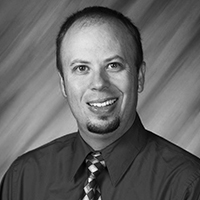
Jay R. Townsend
Fairmount High School
Fairmount, ND
Grades: 7–12
Students: 46
Region: Urban
• Building relationships with students and parents
• Collaboration among staff
In Fairmount Public Schools, we have an awesome experience for our grade 7–12 students that we call our collaboration projects. For these projects, we pick a topic for staff and students and they work collaboratively to accomplish a goal. Some of the topics over the years have included solar ovens, putt-putt boats, and inventions. One project I would like to highlight is when our students created a claymation video on bullying. Students and staff were assigned a K–6 group of students and worked together with these students to create an anti-bullying video. At the end of the project, all of our students in grades K–12 presented their videos to our community and parents on the negative effects of bullying. This project developed leadership skills for our grade 7–12 students and created positive relationships among administration, staff, students, parents, and community members.
Ohio
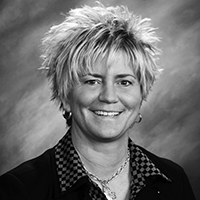
Angela A. Adrean
Worthington Kilbourne High School
Columbus, OH
Grades: 9–12
Students: 1,264
Region: Suburban
• Relationships and student voice
• Collaborative, servant leadership
2016 marks the 25th anniversary of Worthington Kilbourne High School and it was important to our school community that we took the initiative to celebrate the traditions within our school family. During the summer of 2015, we worked collaboratively to reinvent our school mission statement, “to inspire the pursuit of happiness through developing positive relationships, demonstrating responsible actions, and maximizing personal growth.” We understand that a great idea does not necessarily create a great culture, so we were sure to act upon our words through the implementation of teacher-based teams, a building leadership team, and several student leadership teams. These structures are essential to systematic school reform and ensuring that what we say is truly how we perform and sustain the culture and climate we desire as a high-performing high school.
Oklahoma
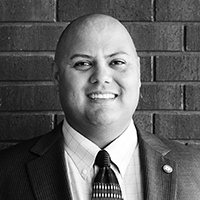
Michael Tamez
Eufaula High School
Eufaula, OK
Grades: 9–12
Students: 345
Region: Rural
• Relational leadership
• Professional development strategies
The one area that has been a huge focus for me is collaborative leadership. I have developed ways to implement 15-minute professional development workshops infusing curriculum with technology. I have set up “sip-n-shares” and “lunch-n-learns” for teachers to be able to share their success in their classroom with colleagues. This has been very beneficial as it allows collaboration with the experts in the classroom. I also have designed all teacher meetings for professional development using research-based teaching strategies throughout the meeting. It is very important for me to model the different infusion strategies for my teachers.
Oregon
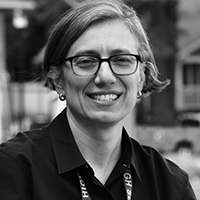
Margaret Calvert
Jefferson High School—Middle College for Advanced Studies
Portland, OR
Grades: 9–12
Students: 502
Region: Urban
• Using data to shape decision making and inform instruction
• Fostering a culture of teacher collaboration
In the spring of 2010, Jefferson High School—Middle College for Advanced Studies was on the brink of closure. This was a call to action in the African American community. Tony Hopson Sr., president and CEO of Self Enhancement, Inc. (SEI), was one of the prominent voices that challenged us to reinvest in Jefferson and our students. Dr. Gatewood, then president of the Cascade Campus of Portland Community College, also stepped forward to say that they were ready to partner more deeply with our school. It was from this moment on that Jefferson High School became a full middle-college program with wrap-around student support. Today, 100 percent of our students are expected to complete college course work prior to graduation and roughly 80 percent receive services from SEI. These strategic partnerships are on a scale that requires all three entities to align our priorities, set clear goals, and foster strong relationships in service of our students.
Pennsylvania

Bill Ziegler
Pottsgrove High School
Pottstown, PA
Grades: 9–12
Students: 1,022
Region: Suburban
• Digital leadership
• Building community through increased communication
The faculty, staff, and principal team at Pottsgrove High School are working toward a focus on the success of every student. This commitment to student learning is engaged through technology and integrating digital media into classrooms resulting in improved instructional strategies, student-driven learning, equal access to technology, STEAM, and increased college and career readiness. Every student receives a MacBook Air and all teachers are provided job-embedded coaching from an Apple Instructional Coach. Teachers are engaging students at new levels of learning as they integrate technology into their lessons. This collaborative journey included teachers, staff, students, parents, the district office/school board, and the entire community. We doubled the number of students taking rigorous courses such as AP, Dual Enrollment, and STEAM. Our librarian has also created an amazing MakerSpace & BreakerSpace for students to create and design throughout the day. Our teachers are engaging students through relationships, technology, and rigorous courses.
Rhode Island
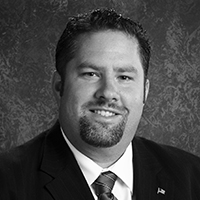
Jason Masterson
Joseph L. McCourt Middle School
Cumberland, RI
Grades: 6–8
Students: 450
Region: Suburban
• Communication
• Collaboration
Culture and collaboration go hand-in-hand to ensure school success. At Joseph L. McCourt Middle School, the staff read the book Drive by Daniel Pink. This book was chosen because it focused on adult motivation and how we could build systems of operation for our school. After reading the book, we made an emphasis to focus on teacher autonomy and collaboration. After two years of implementation, teachers have told me that they have never felt more respected as professionals and they have never worked harder in their lives. This is because they feel like they are now addressing their students’ needs as professional teachers, rather than employees. This autonomy empowers teachers not only in the classroom, but also to change school procedure and help build a shared set of expectations. Beyond school culture, we are encouraged to see how this increases student achievement and engagement over the next few years.
South Carolina

Bill Coon
Meadow Glen Middle School
Lexington, SC
Grades: 6–8
Students: 1,088
Region: Suburban
• Recruiting the right people for the right jobs
• Facilitating positive school culture
The house leader role is a new twist on teacher leadership founded on a culture of shared leadership. House leaders have a direct impact on teachers’ collegial experiences and student achievement. They directly support teachers and students by serving as instructional coaches, lead interventionists for their grade level, and facilitators of house culture. As such, house leaders keep a careful watch on all students in their house and ensure that students receive the targeted support they need, whether it be academic, social, or emotional support. In addition, house leaders work to recognize and celebrate the many successes of our students and teachers. They also work with parents and families to foster relationships that strengthen the connection between school and community. Furthermore, house leaders teach two classes a day, which positions them as a colleague doing the hard work of teaching.
South Dakota
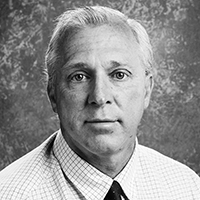
Kevin Lein
Harrisburg High School
Harrisburg, SD
Grades: 9–12
Students: 718
Region: Rural
• Customized learning
• School culture
My greatest success is yet to come. On September 30, 2015, a student entered my office and shot me. He is currently incarcerated. When this young man is able to move past this event and lead a productive life, with any assistance I can give, my life will then have been a success. He and I are now intertwined realistically and symbolically forever—his future possibilities and advancement matters a great deal to me. There is a critical balance of utilizing this tragic day to light the positive and strengthen our resolve of many of the tenets we advocate for our students. Two shadowing contexts resound: Turn a Heart, Touch a Soul, which attempts to make sure no one at Harrisburg High School is isolated or left out and that adults and students are genuinely getting to know the person sitting next to us. Second, Harrisburg Strong is an individual and collective effort of empowerment for every stakeholder. This event has reinforced our mission and our overriding informal goal. We wish for each student to become an independent decision maker and our aspiration is an Individualized Education Program for every student at HHS.
Tennessee
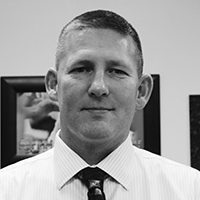
John C. Bartlett
Bearden High School
Knoxville, TN
Grades: 9–12
Students: 2,051
Region: Suburban
• Organizational leadership
• Communication
Todd Whitaker says it best: “It’s people, not programs.” In my 12 years as a high school principal and 20 years as an educator, I have seen programs that are well meaning and well implemented, but are an abysmal failure due to the people. I have also seen schools without intricate programs be very successful because of the great people in the schools. The most successful stories of my career are those of other people within the school who I have encouraged to become school leaders and advance themselves professionally. I have found the most important thing I can do is to hire, develop, and support the best professionals.
Texas

Edgar B. Tibayan
Lucy Rede Franco Middle School
Presidio, TX
Grades: 6–8
Students: 307
Region: Rural
• Building collaboration and teamwork
• Optimizing students’ passion for education
Presidio is an extremely isolated community located on the Mexican border. It is very poor compared to other towns: Presidio Independent School District is often referred to as the 4th poorest district in the state of Texas. Lucy Rede Franco Middle School looks at these facts not as problems, but opportunities for academic growth. In the 2013–14 school year, the school met the accountability standard with six distinction designations. This is due to the school climate and culture that the members of the academic community have built. They are sharing a vision of excellence and a culture of teamwork and collaboration. Our school fosters both academic excellence and ethics. The professional learning community meets once a week to share best practices. We initiate Continuous Campus Improvement that supports the teachers’ academic instruction and we’ve built Campus Quality Team, a volunteer group of teachers assisting the school in promoting activities involving faculty and staff.
Utah

Mark Whitaker
Mountain Ridge Junior High
Highland, UT
Grades: 7–9
Students: 1,400
Region: Suburban
• Building school culture and fostering positive relationships
• Problem solving
Years ago, I had the opportunity to work with a young man with some significant challenges, including both suicidal and homicidal ideation. In spite of these challenges, I really cared about this young man’s education and his future. He required a great deal of personal support until he eventually moved. He called me three months ago and in his message, he thanked me for helping him so much and asked me to call him so he could report on how he was doing. When I called back, he told me he had joined the ROTC program—he called me sir throughout the conversation. He apologized and reiterated his gratitude. I could tell he wanted me to be proud of him and his growth. I am proud of him, and I’ll never forget the lesson I learned: The collective success of a school is determined by the personal experience of each individual student.
Vermont

Brian Schaffer
Lamoille Union High School
Hyde Park, VT
Grades: 9–12
Students: 538
Region: Rural
• Dual enrollment in rural schools
• Collaborative learning practices
In many senses, Lamoille Union High School was a traditional high school eight years ago, with very traditional grading practices. If a student failed a test or submitted an assignment late, too bad, because we were going to teach that student a lesson by assigning a zero. No make-ups, retakes, or mulligans permitted; we were going to drill down responsibility to every student and that responsibility meant compliance. While feeling responsible from a traditional perspective, the net result of this practice was despondent students and an abysmal schoolwide course pass rate. Assembling a team of teacher leaders, we dove into research about supported grading practices. We led conversations with all faculty, parent groups, and students, bringing them along with what we were learning. At the end, we earned consensus around schoolwide grading practices that remain to this day, and have evidenced stronger persistence in our students and a high course pass rate.
Virginia
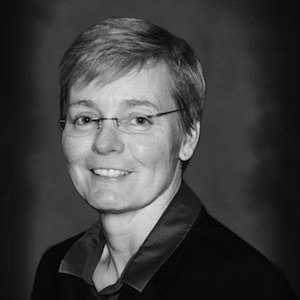
Melissa D. Hensley
Central High School
Woodstock, VA
Grades: 9–12
Students: 790
Region: Rural
• Shared leadership
• High school redesign
I implemented an Instructional Collaborator (IC) peer-coaching-peers program. Teachers use one planning period a week to coach a teacher who volunteered to be a part of the program to increase the use of evidenced-based instructional practices. I have demonstrated shared leadership by supporting the program and trusting ICs to provide coaching around the core curriculum framework developed by Central High School. Data taken by ICs is used for the primary purpose of increasing instructional practices, developing schoolwide professional development, and reviewing the program implementation. Teacher-specific data collection or individual goals that are developed between the IC partner and teacher are never shared with administration so that the feedback teachers receive is truly non-evaluative. Teachers have increased core instructional practices resulting in increased student achievement and engagement. The shared leadership between administration and ICs has created a culture of high expectations, collaboration, professional development, and lifelong learning.
Washington

Ryan Maxwell
Sunnyside High School
Sunnyside, WA
Grades: 9–12
Students: 1,900
Region: Rural
• Positive and collaborative culture
• Daily audits
The Sunnyside High School graduation rate has improved from 46 percent to 90 percent in the past six years. We have gone from a school with massive gang issues where three 12th grade students died of gang violence in one year, to a school that has a positive and college-going culture. This has been accomplished by connecting all stakeholders to a common vision—100 percent graduation. Through an equal focus on relational trust, social support, and academic press with staff and students, we have created nearly infallible systems that have led to a culture of success.
West Virginia
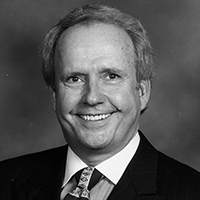
Ronald A. Reedy
Sissonville High School
Charleston, WV
Grades: 9–12
Students: 750
Region: Rural
• Climate improvement
• Collaborative leadership
When I became principal at Sissonville High School in 2012, I succeeded an administrator who had been in the position for 28 years. The school’s culture was teacher-driven and many of the students did not feel valued. My philosophy is very much student-driven and as such, we spent the first year creating programs to express to the students that they were capable of being anything that they chose to be. We developed incentive programs to increase attendance and reduce discipline referrals, but mostly we created a climate where the students came first. As a result, after the first year our school went from the 97th high school in the state to 14th! Our test scores set a historic high, and our graduation rate skyrocketed. All we did was convince our students that we cared and that at our school, students are priority number one and everything else is priority number two.
Wisconsin
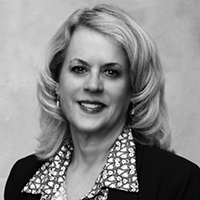
Robin Kvalo
Portage High School
Portage, WI
Grades: 9–12
Students: 788
Region: Rural
• Collaborative decision making
• Technology spaces in high schools
I have grown as a leader, particularly in collaborative leadership, over the past five years. First building trust with my school team, and then seeking the voice of stakeholders in decision making led to new, innovative practices at Portage High School. My success in the technical education and engineering department has been the most rewarding. An early goal was to create a school within a school, providing experiences that lead to career readiness for students. Through the development of the Portage Enterprise, our students have team-taught classes for English, science, and math related to work they are doing for community manufacturers. The collaborative process of working with my teachers, students, and community leaders led to a new STEM program, multiple career fairs, and visits to manufacturing sites where students gained real-world experiences and began to understand how the skills they were expected to gain in school were used in the workplace.
Wyoming

Darrin M. Peppard
Rock Springs High School
Rock Springs, WY
Grades: 9–12
Students: 1,350
Region: Suburban
• Building and maintaining positive school climate and culture
• Developing young assistant principals
Several years ago, we set out to allow for a more personalized experience for students. We targeted development of career academies around rigor, relevance, and relationships. Seven years later, our career academies have graduation rates near 95 percent and so many more students are leaving high school truly college and career ready. Our career academies have been identified as ‘islands of excellence’ by the U.S. Department of Education and were visited during the Education Drives America tour in 2012. Similar to the educational focus, our school also has adopted the Jostens Renaissance program to focus on positive climate and culture for staff and students. This program has supported students and demonstrated an increase in average daily attendance from 84 percent in 2006 to 92 percent today. School spirit is very high and staff morale is as well. The program was awarded Jostens’ Make it Matter award in 2014.
